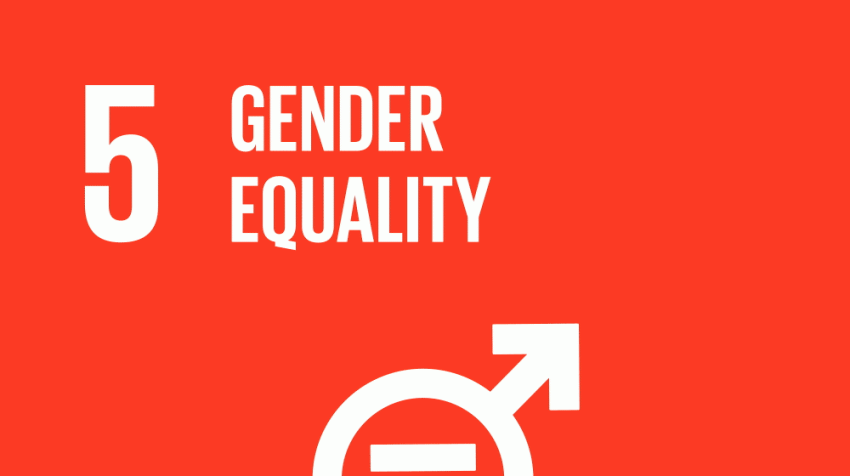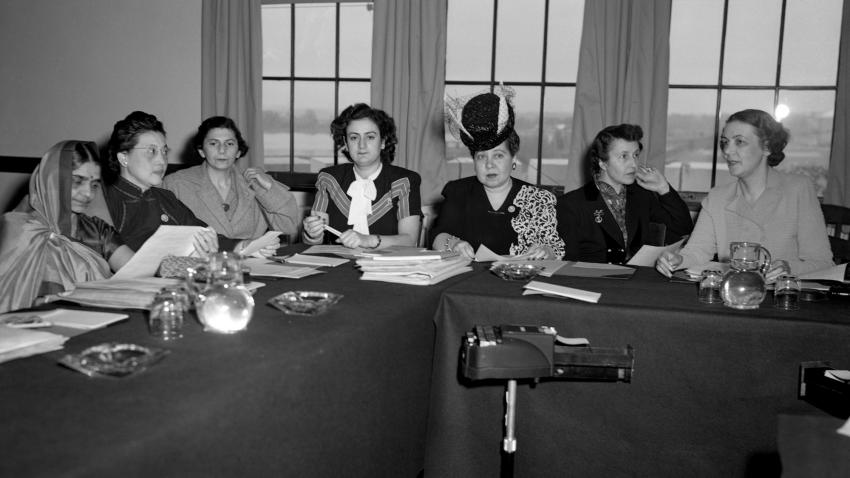April 2015, No. 4 Vol. LI, Beyond 2015
In a paper entitled “No empowerment without rights, no rights without politics”, that was written for a Millennium Development Goals (MDGs) assessment project, we argued that: “…progress towards gender equality and women’s empowerment in the development agenda requires a human rights-based approach, and requires support for the women’s movement to activate and energize the agenda. Both are missing from Millennium Development Goal (MDG) 3. Empowerment requires agency along multiple dimensions—sexual, reproductive, economic, political, and legal. However, MDG 3 frames women’s empowerment as reducing educational disparities. By omitting other rights and not recognizing the multiple interdependent and indivisible human rights of women, the goal of empowerment is distorted and “development silos” are created…”. We also drew attention to “women’s organizations…[as] key actors in pushing past such distortions and silos at all levels, and hence crucial to pushing the gender equality agenda forward. However, the politics of agenda setting also influences funding priorities such that financial support for women’s organizations and for substantive women’s empowerment projects is limited” (Sen and Mukherjee, 2014, p. 188).
Much has changed since the MDGs were first formulated soon after the Millennium Declaration in 2000. Or has it? It is undoubtedly true that, as compared to the formulation of the MDGs, the sustainable development goals (SDGs) has been a more open and more inclusive process driven by United Nations Member States, and generating intense and wide debate. And yet, when it comes to gender justice, the goals sound eerily similar. MDG 3 committed to “Promote gender equality and empower women”; SDG 5 (as agreed thus far through the process of the General Assembly’s Open Working Group (OWG)) (United Nations, 2014) calls to “Achieve gender equality and empower all women and girls”. However, two important differences at this level are the explicit inclusion of girls, and of the word “all”, which can be used to address the challenges faced by the most marginalized and oppressed. More differences appear at the level of the targets under the goal: whereas MDG 3 had a single target focused on education, SDG 5 proposes a range of targets to end discrimination, violence and harmful practices, recognize and value unpaid care work, participation and leadership in decision-making, and universal access to sexual and reproductive health and reproductive rights. How SDG 5 and its proposed targets will finally translate into indicators, and whether these will be effective and usable for monitoring (where the rubber hits the road) remains to be seen.
Nonetheless, despite advances over the MDGs, there is still a worrying limitation to SDG 5: the absence of a clear recognition of the human rights of women and girls. This piece is being written even as the battle over the affirmation of women’s human rights and the role of women human rights defenders has been bitterly fought at this year’s meeting of the United Nations Commission on the Status of Women (CSW). What happens at the CSW is important because it is an established institution for review and monitoring, and because it is under the aegis of UN-Women, which will be the main operational arm for meeting SDG 5.
The Political Declaration of the CSW (United Nations, 2015), which is the main outcome of the meeting, includes human rights in a non-operational chapeau; once more in paragraph 2 where it recognizes that the implementation of the Beijing Platform for Action (BPFA) and the Convention on the Elimination of All Forms of Discrimination against Women are mutually reinforcing for the realization of the human rights of women and girls; and again in paragraph 5 where human rights of women are listed as one of the 12 critical areas of concern (of the BPFA). The attempt to thread human rights throughout the document did not succeed, although neither did the attempt to remove all mention. But the main operational paragraph (paragraph 6) where Governments pledge to take action contains nothing explicit on human rights, nor does any other paragraph.
Even the limited mentions of human rights in the Political Declaration were only agreed upon after protracted negotiations against arguments such as those of an observer State that women’s human rights are only one among the 12 areas of the BPFA and should not be given special mention. That the human rights of girls and women should be contentious 15 years after the Millennium Declaration, and 20 years after the Fourth World Conference on Women, is a product of backlash. This backlash attempts to roll back the advances and very real changes in norms and frameworks for realizing women’s human rights, agreed by consensus among Member States during the United Nations conferences (at Vienna, Cairo and Beijing) of the 1990s. While funding to translate these norms and frameworks into practice has been woefully inadequate as noted by Sen and Mukherjee in their articles, the norms themselves are essential to have in place.
Human rights are contentious because, unlike policies and programmes, they are often more clearly justiciable, and can be used to hold Governments and others to account for their acts of commission or omission. The backlash against women’s human rights has been led by Member (and observer) States of the United Nations with poor records on discrimination against women, as well as laws, policies and practices that sustain gender inequality across a wide spectrum of issues. A telling reminder of who is principally behind the backlash was the Political Declaration’s refusal to recognize the key role of women’s human rights defenders who often risk their liberty and their lives to protect and advance the human rights of girls and women at risk. However, the fault is not only here. The refusal by other Member States to recognize that economic, social and cultural rights are interlinked and inseparable from civil and political rights is also a serious challenge to advancing towards the fulfilment of SDG 5.
Finally, one also has to ask the question: where’s the beef? Each SDG (as enunciated in the OWG’s report) has its attached targets and means of implementation. Those linked to SDG 5 mention legal reforms and technology (5.a, 5.b and 5.c), but there is no reference made about funding. Given that a major weakness in the fulfilment of MDG 3 was the inadequacy of funding, the challenge of funding SDG 5 will remain as a major stumbling block unless it becomes central to its means of implementation.
References
Fukuda-Parr, Sakiko, Alicia Ely Yamin, and Joshua Greenstein (2014). The Power of Numbers: A Critical Review of Millennium Development Goal Targets for Human Development and Human Rights. Journal of Human Development and Capabilities, vol. 15, no. 2-3, p. 105-117.
Sen, Gita, and Avanti Mukherjee (2014). No Empowerment Without Rights, No Rights Without Politics: Gender-equality, MDGs and the post-2015 Development Agenda. Journal of Human Development and Capabilities, vol. 15, no. 2-3. p. 188-202.
United Nations, Report of the Open Working Group of the General Assembly on Sustainable Development Goals, 12 August 2014 (A/68/970). Available from http://undocs.org/a/68/970.
United Nations, Economic and Social Council (2015). Commission on the Status of Women. Political declaration on the occasion of the twentieth anniversary of the Fourth World Conference on Women. 5 March. E/CN.6/2015/L.1.
The UN Chronicle is not an official record. It is privileged to host senior United Nations officials as well as distinguished contributors from outside the United Nations system whose views are not necessarily those of the United Nations. Similarly, the boundaries and names shown, and the designations used, in maps or articles do not necessarily imply endorsement or acceptance by the United Nations.




